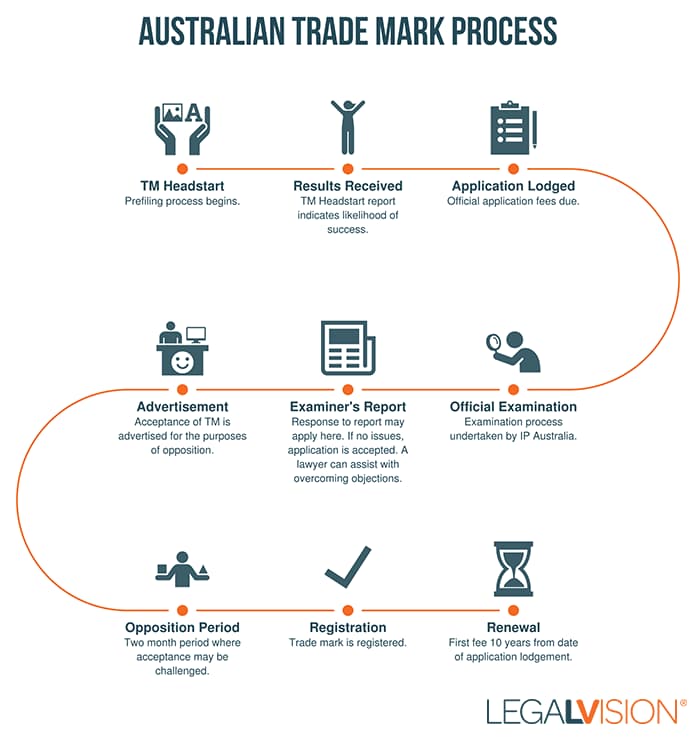A trade mark is a sign used to distinguish your goods and services from those of your competitors. Almost anything can be a registered trade mark. Letters, numbers, words, company names, phrases, sounds, scents, shapes, logos, pictures and even product packaging can be trademarked. The registration of a trade mark is incredibly beneficial. Registration gives you, the owner, a legally enforceable right to commercially use, sell or assign the trade mark to others. Furthermore, you now have the right to prevent others from using the same mark or a similar mark in relation to similar goods or services.
When you file a trade mark application, you must choose trade mark classes of goods and/or services under which the mark is to be registered. There are 45 classes to choose from. Classes one to thirty-four (1 – 34) cover goods, while classes thirty-five to forty-five (35 – 45) cover services.

Choose Correctly the First Time
Choosing the right class(es) is crucial. You may not have adequate protection if you don’t select the appropriate trade mark classes. The goods and services description cannot be expanded once a trade mark application is submitted. If you wish to obtain coverage in additional trade mark classes or for additional items in a registered class, you will need to submit a new trade mark application. Subsequently, you will need to pay additional application fees.
IP Australia has a handy picklist tool where you can search for goods and services to better understand what your registration should cover. Using various search terms can help you identify the correct choice of the core goods and/or services in your business.
Be Broad and Specific
When choosing trade mark classes of goods and/or services, the aim is to choose specifications that are broad enough to allow your business to grow but narrow enough to allow you to enforce your trademark. If your goods and/or services specifications are too broad, you are potentially exposing yourself to a claim for non-use by third parties.
To this end, it may be helpful to consider:
- the current focus of your business;
- your output (the goods/services that you provide); and
- the expansion potential of your business over the next three years. Why three years? A non-use action will be capable of being substantiated if you have not used your trade mark in relation to your claimed goods and/or services for at least three years.
Common Mistake #1: Applying for Retailing Services in Class Thirty-Five (35)
As a manufacturer of goods, it is natural that you will also be selling the products that you make. You do not necessarily need to apply under class thirty-five (35) for retail services.
A trade mark application should only be submitted under the retail services category if you are planning on opening up shop and selling other people’s goods in addition to your own.
Common Mistake #2: Applying for Internal Business Functions
By the same token, when submitting a trade mark application, you do not need to claim for internal business operations. If you are merely providing a service such as retailing, maintenance and repair, advisory and consultancy services, you don’t need to apply for:
- the manufacture of the materials you use/sell; or
- necessary business operations and administrative functions.
Common Mistake #3: Being Too General
With the large number of options for goods and services, it is important you select the specific good or service when it is available rather than just the generic option.
For example, ‘business services’ is covered in class 35. However, if you are a training provider, the more specific service would be ‘business training services’ in class 41.

This guide explains the essentials of trade marks and the steps required to register a trade mark.
Key Takeaways
Create a list of goods and/or services you’re offering, and plan to offer in the next three years and get both specific and broad. Thoroughly review your draft trade mark application before filing to make sure you have covered your key business goods and/or services. Keep in mind you will need to rely on your choice of goods and/or services to enforce your trade mark rights if required.
If you need help applying for a trade mark or choosing trade mark classes for your goods and services, contact our experienced trade mark lawyers as part of our LegalVision membership. For a low monthly fee, you will have unlimited access to lawyers to answer your questions and draft and review your documents. Call us today on 1300 544 755 or visit our membership page.
Frequently Asked Questions
Take your time to review your business’s core goods and/or services. Moreover, you should also map out your expansion plans for the next three years. These are the goods and services that you should include in your application.
Cost – you pay additional fees for each class you file in. It is also key to only cover your trade mark for goods and/or services you intend to use. Otherwise, your application can be subject to a non-use removal action.
We appreciate your feedback – your submission has been successfully received.











